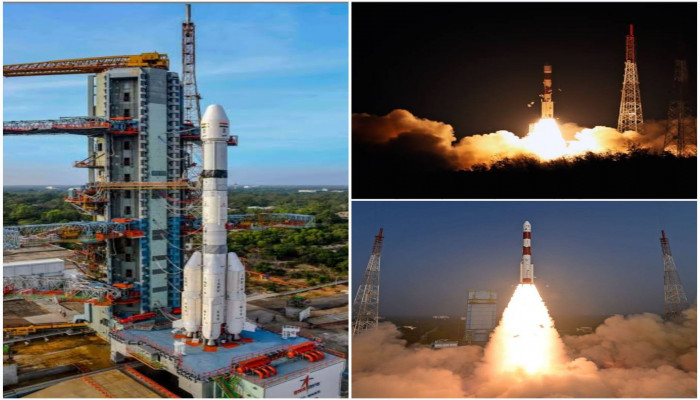ISRO achieves historic 100th rocket launch with successful GSLV-F15 launch
- In Reports
- 11:43 AM, Jan 29, 2025
- Myind Staff
The Indian Space Research Organisation (ISRO) has achieved a successful launch of the GSLV-F15 carrying the NVS-02 satellite at 6:23 AM from Sriharikota, Andhra Pradesh, marking its 100th rocket mission. This mission also holds significance as the first under the leadership of ISRO Chairman V. Narayanan, who recently took charge. Additionally, it is ISRO’s first launch of the year.
Following the satellite's successful deployment, Narayanan addressed the achievement, "The satellite was precisely injected into the required (GTO) orbit. This mission is the 100th launch, which is a very significant milestone." He further confirmed that all systems were functioning normally, saying, "In this mission, the data has come; all vehicle systems are normal."
ISRO’s journey to this milestone began nearly 46 years ago when the first significant rocket, the Satellite Launch Vehicle (SLV), was launched from Sriharikota on August 10, 1979. Since then, all major rocket launches at the site have been conducted by the Indian government.
Ahead of the launch, S. Unnikrishnan Nair, Director of the Vikram Sarabhai Space Centre in Thiruvananthapuram, expressed confidence in the mission, stating, "It is as robust as the previous one. Like any other launch, we make every launch robust to the best of our ability. It will be successful."
The GSLV rocket has had a challenging history within ISRO, often referred to as its "naughty boy" due to the difficulties it has posed. Out of 16 launches, six have ended in failure, resulting in a significant 37% failure rate. In contrast, India’s newer and more powerful rocket, the Launch Vehicle Mark-3 (LVM-3), also known as "Bahubali," boasts a 100% success rate.
The GSLV-F15 belongs to the same family of rockets with which India demonstrated its expertise in developing cryogenic engines. This achievement resulted from two decades of dedicated effort after India was denied access to cryogenic engine technology by Russia, which faced pressure from the United States to block the transfer.
According to ISRO, the GSLV-F15 marks the 17th flight of India’s Geosynchronous Satellite Launch Vehicle (GSLV) and the 11th flight using an indigenous cryogenic stage. It is also the 8th operational flight of the GSLV featuring India's own cryogenic stage and represents the 100th rocket launch from Sriharikota. The rocket's payload fairing is a metallic version with a diameter of 3.4 meters.
The GSLV-F15, equipped with its indigenous cryogenic stage, is tasked with placing the NVS-02 satellite into a Geosynchronous Transfer Orbit (GTO). The launch occurs from the Second Launch Pad (SLP) at the Satish Dhawan Space Centre.
The Navigation with Indian Constellation (NavIC) system is India’s independent regional navigation satellite network designed to provide precise Position, Velocity and Timing (PVT) services to users within India and in regions extending approximately 1,500 km beyond its landmass.
NavIC offers two types of services—the Standard Positioning Service (SPS) which is accessible to all users, and the Restricted Service (RS) intended for authorised users. The system provides positioning accuracy of better than 20 meters and timing accuracy of better than 40 nanoseconds within its coverage area.
NavIC emerged from India's challenges, particularly after the 1999 Kargil conflict with Pakistan. During the skirmish, India was denied access to high-resolution Global Positioning System (GPS) data, highlighting the need for an independent navigation system. In response, then-Prime Minister Atal Bihari Vajpayee pledged to develop an indigenous GPS alternative for India’s strategic needs.
With this 100th rocket launch, ISRO aims to put behind the initial hurdles faced by both the navigation satellites and the launch vehicle. The space agency is determined to mark this milestone grandly, reflecting its progress and resilience.







Comments